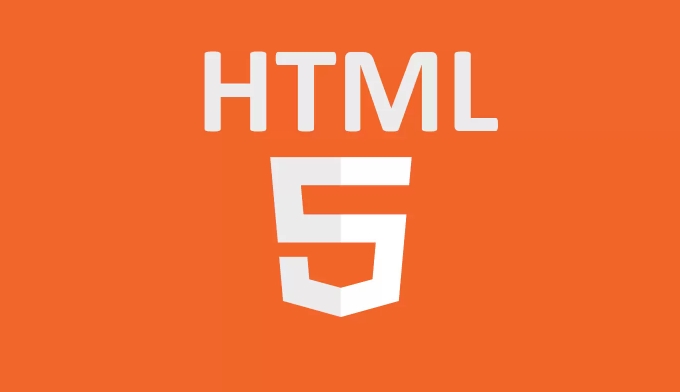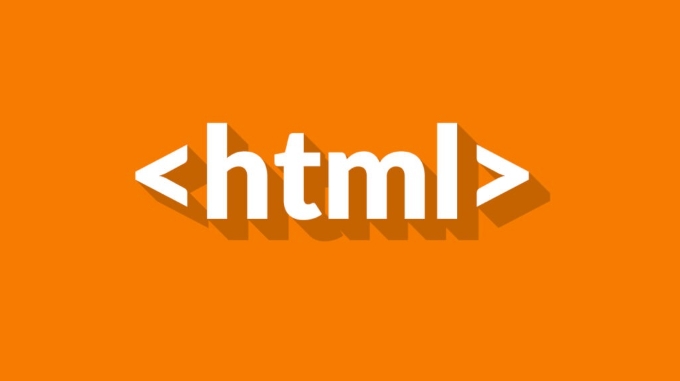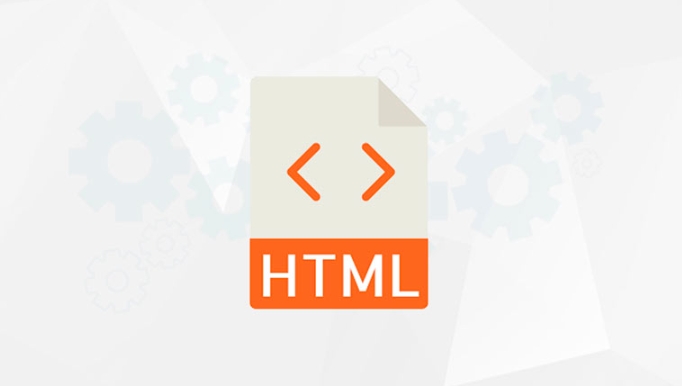What is the url input type in HTML5?
The URL input type in HTML5 is used for fields requiring a web address and is defined with <input type="url">. 2. It helps users enter valid URLs by enabling built-in validation and improving user experience, especially on mobile devices where the keyboard adapts to show URL-friendly keys like ".com" and "/". 3. The browser validates that the input includes a proper protocol such as http:// or https://, meaning entries like example.com without a protocol are considered invalid. 4. In older browsers that do not support type="url", it falls back to a standard text input without validation. 5. Attributes like placeholder, required, and pattern can enhance usability and enforce stricter input rules. 6. On mobile, the specialized keyboard layout speeds up and improves accuracy of URL entry. In summary, the URL input type ensures properly formatted web addresses through automatic validation and enhanced mobile input with minimal development effort.

The url input type in HTML5 is a specialized input type used for fields that should contain a URL (web address). It is defined using the <input type="url"> element.

Purpose and Usage
This input type is designed to:
- Help users enter valid web addresses.
- Enable better validation and user experience, especially on mobile devices where the keyboard can adapt to URL input (e.g., showing a ".com" button).
Example:

<label for="website">Website:</label> <input type="url" id="website" name="website">
Built-in Validation
The browser automatically validates that the input matches a basic URL format:
- It must start with a valid protocol (like
http://,https://,ftp://, etc.). - It should follow standard URL syntax.
For example, https://example.com is valid, but example or example.com (without a protocol) will fail validation unless the site uses a custom validation workaround.

Note: The http:// or https:// part is required for validity — entering just example.com will typically be considered invalid by the browser.
Browser Support and Fallback
Most modern browsers support type="url". In older browsers that don't recognize it, it gracefully degrades to a standard type="text" input — meaning users can still type anything, but without the built-in validation or special keyboard.
Attributes and Enhancements
You can use common attributes to improve usability:
placeholder: Suggest format (e.g.,https://example.com)required: Makes the field mandatorypattern: Add custom regex for stricter control (though the default validation is often sufficient)
Example with attributes:
<input type="url" name="website" placeholder="https://example.com" required >
Mobile Experience
On mobile devices (especially iOS and Android), using type="url" triggers a special keyboard layout with easy access to characters like /, ., and ://, improving input accuracy and speed.
In short, type="url" helps ensure users enter properly formatted web addresses, improves mobile input, and adds automatic client-side validation — all with minimal extra code.
The above is the detailed content of What is the url input type in HTML5?. For more information, please follow other related articles on the PHP Chinese website!

Hot AI Tools

Undress AI Tool
Undress images for free

Undresser.AI Undress
AI-powered app for creating realistic nude photos

AI Clothes Remover
Online AI tool for removing clothes from photos.

Clothoff.io
AI clothes remover

Video Face Swap
Swap faces in any video effortlessly with our completely free AI face swap tool!

Hot Article

Hot Tools

Notepad++7.3.1
Easy-to-use and free code editor

SublimeText3 Chinese version
Chinese version, very easy to use

Zend Studio 13.0.1
Powerful PHP integrated development environment

Dreamweaver CS6
Visual web development tools

SublimeText3 Mac version
God-level code editing software (SublimeText3)
 Integrating CSS and JavaScript effectively with HTML5 structure.
Jul 12, 2025 am 03:01 AM
Integrating CSS and JavaScript effectively with HTML5 structure.
Jul 12, 2025 am 03:01 AM
HTML5, CSS and JavaScript should be efficiently combined with semantic tags, reasonable loading order and decoupling design. 1. Use HTML5 semantic tags, such as improving structural clarity and maintainability, which is conducive to SEO and barrier-free access; 2. CSS should be placed in, use external files and split by module to avoid inline styles and delayed loading problems; 3. JavaScript is recommended to be introduced in front, and use defer or async to load asynchronously to avoid blocking rendering; 4. Reduce strong dependence between the three, drive behavior through data-* attributes and class name control status, and improve collaboration efficiency through unified naming specifications. These methods can effectively optimize page performance and collaborate with teams.
 HTML5 video not playing in Chrome
Jul 10, 2025 am 11:20 AM
HTML5 video not playing in Chrome
Jul 10, 2025 am 11:20 AM
Common reasons why HTML5 videos don't play in Chrome include format compatibility, autoplay policy, path or MIME type errors, and browser extension interference. 1. Videos should be given priority to using MP4 (H.264) format, or provide multiple tags to adapt to different browsers; 2. Automatic playback requires adding muted attributes or triggering .play() with JavaScript after user interaction; 3. Check whether the file path is correct and ensure that the server is configured with the correct MIME type. Local testing is recommended to use a development server; 4. Ad blocking plug-in or privacy mode may prevent loading, so you can try to disable the plug-in, replace the traceless window or update the browser version to solve the problem.
 Explaining the HTML5 `` vs `` elements.
Jul 12, 2025 am 03:09 AM
Explaining the HTML5 `` vs `` elements.
Jul 12, 2025 am 03:09 AM
It is a block-level element, suitable for layout; it is an inline element, suitable for wrapping text content. 1. Exclusively occupy a line, width, height and margins can be set, which are often used in structural layout; 2. No line breaks, the size is determined by the content, and is suitable for local text styles or dynamic operations; 3. When choosing, it should be judged based on whether the content needs independent space; 4. It cannot be nested and is not suitable for layout; 5. Priority is given to the use of semantic labels to improve structural clarity and accessibility.
 HTML5 video streaming techniques and considerations
Jul 14, 2025 am 02:41 AM
HTML5 video streaming techniques and considerations
Jul 14, 2025 am 02:41 AM
Three points to note for making HTML5 videos smoothly playback: 1. Select a suitable video format, such as MP4, WebM or Ogg, and provide multiple formats or a single format according to the target user's choice; 2. Use adaptive bit rate technology such as HLS or DASH, combined with hls.js or dash.js to achieve automatic clarity switching; 3. Reasonably set preloading policies and server configurations, such as preload attributes, byte range requests, compression and cache, to optimize loading speed and reduce traffic consumption.
 What are the new input types available in HTML5 forms?
Jul 12, 2025 am 03:07 AM
What are the new input types available in HTML5 forms?
Jul 12, 2025 am 03:07 AM
HTML5introducednewinputtypesthatenhanceformfunctionalityanduserexperiencebyimprovingvalidation,UI,andmobilekeyboardlayouts.1.emailvalidatesemailaddressesandsupportsmultipleentries.2.urlchecksforvalidwebaddressesandtriggersURL-optimizedkeyboards.3.num
 Developing Web Games Using HTML5 Canvas and Game APIs
Jul 14, 2025 am 03:08 AM
Developing Web Games Using HTML5 Canvas and Game APIs
Jul 14, 2025 am 03:08 AM
HTML5Canvas is an API for drawing graphics and animations on web pages, combined with GameAPIs to enable feature-rich web games. 1. Set elements and get 2D context; 2. Use JavaScript to draw objects and implement animation loops; 3. Process user input to control the game; 4. Combine APIs such as Gamepad, WebAudio, PointerLock and Fullscreen to improve the interactive experience; 5. Optimize performance and manage resource loading to ensure smooth operation.
 How to access user's current location with the HTML5 Geolocation API?
Jul 13, 2025 am 02:23 AM
How to access user's current location with the HTML5 Geolocation API?
Jul 13, 2025 am 02:23 AM
To get the user's current location, use the HTML5 GeolocationAPI. This API provides information such as latitude and longitude after user authorization. The core method is getCurrentPosition(), which requires successful and error callbacks to be handled; at the same time, pay attention to the HTTPS prerequisite, user authorization mechanism and error code processing. ① Call getCurrentPosition to get the position once, and an error callback will be triggered if it fails; ② The user must authorize it, otherwise it cannot be obtained and may no longer be prompted; ③ Error processing should distinguish between rejection, timeout, location unavailable, etc.; ④ Enable high-precision, set timeout time, etc., and can be configured through the third parameter; ⑤ The online environment must use HTTPS, otherwise it may be restricted by the browser.
 Explain the `async` and `defer` attributes for scripts in HTML5.
Jul 13, 2025 am 03:06 AM
Explain the `async` and `defer` attributes for scripts in HTML5.
Jul 13, 2025 am 03:06 AM
The difference between async and defer is the execution timing of the script. async allows scripts to be downloaded in parallel and executed immediately after downloading, without guaranteeing the execution order; defer executes scripts in order after HTML parsing is completed. Both avoid blocking HTML parsing. Using async is suitable for standalone scripts such as analyzing code; defer is suitable for scenarios where you need to access the DOM or rely on other scripts.







